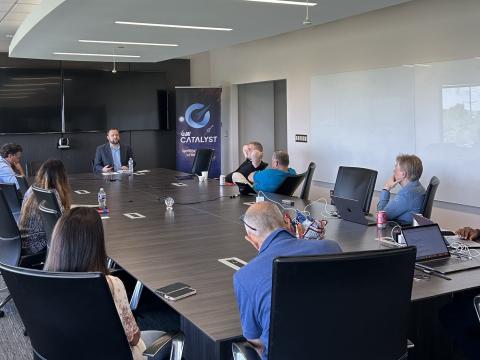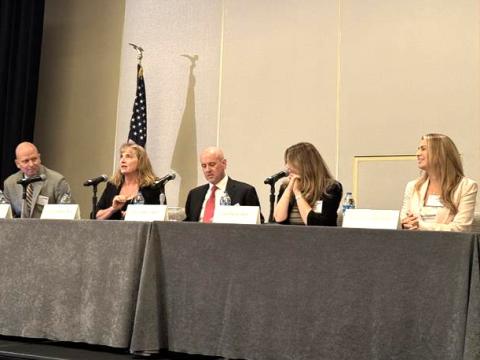Fear, False Information Hinder Biometric Policy
Efforts to produce evidence-driven, equitable and outcome-focused policies for biometric technology have been impeded by a lack of in-depth knowledge, poor implementations, false information and emotions running high.
Duane Blackburn, S&T policy analyst for The MITRE Corporation and former assistant director in the White House Office of Science and Technology Policy, explored these challenges during an interview for AFCEA Asks, where thought leaders and subject matter experts answer questions submitted on social media by the AFCEA community. Blackburn has nearly 20 years experience in the field, and he remarked that while he’s witnessed great advancements in biometric technology, privacy policies and laws have remained untouched for generations. “Frankly, something needs to be done.”
Blackburn believes the challenges stem from one fundamental issue: “We’re really having two conversations about the topic right now—one by the public, and one by the people that actually have experience dealing with the data. And the difference between these conversations is vast.” Both sides agree on the need for good policy, but many things stand in the way of that, he said.
When looking at face recognition specifically, one major obstacle is the complexity of the technology itself. “Face recognition is pretty darn difficult to understand, and for the most part, we’re not really listening to the people with experience,” said Blackburn. He emphasized that while the basic technology is easy to understand, it’s extremely difficult to grasp in any detail. It relates to the Dunning-Kruger Effect, where people are most confident in the subjects they know the least about. “Sounds weird, but as we start to learn about something, we think we get it, and then we realize, okay I didn’t know all the nuances.”
In addition to the lack of understanding, fear often drives the conversations surrounding face recognition. “We’re persuaded most by big fears—surveillance and privacy obviously being big fears.” Those fears combine with confirmation bias, or the tendency to take in new information and view it in ways that support our existing opinions.
As a result, “We’re ending up with all kinds of weird and wild stuff out there,” said Blackburn. “When I talk with people in this community, they’re actually amazed, because the vast majority of news articles, opinion pieces and even some of the policy recommendations that we see includes false information, and that’s been very problematic. It’s leading to bad ideas and even worse policy decisions.” Blackburn remarked he’s even seen summaries of reports that provide analysis and then warn within the same report that the analysis is incorrect. Policy makers at the federal, state and local levels have even made decisions to ban the technologies overall based on “incorrect information and bad assessments,” said Blackburn.
Other challenges to biometric policy include poorly managed implementations by people without expertise in the technology and confusion over issues related to technologies that are similar but not actually the same. And perhaps the biggest hurdle of all—our emotions. “This topic for many of our citizens has become an emotion-driven issue … when that happens, facts matter less,” said Blackburn. “That’s really what we have to overcome as a federal policy community.”
Watch the full Q&A clip with Blackburn:
For more from our AFCEA Asks interview with Blackburn, view the full playlist, which includes questions on policy making during election season, public participation in policy making and the upcoming virtual FedID event.
The Federal Identity Forum & Expo has been the U.S. federal government’s primary outreach and collaboration-building event in the worldwide identity community since 1995. Learn more and join us for this year’s virtual event Sept. 8-11: https://events.afcea.org/FEDID20




Comments